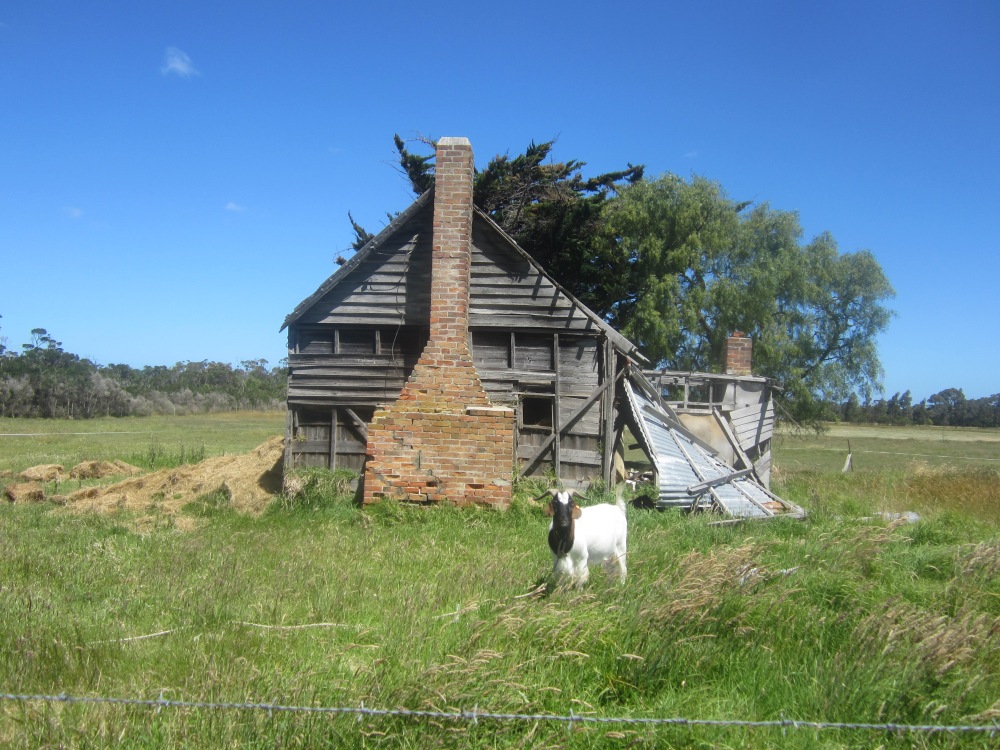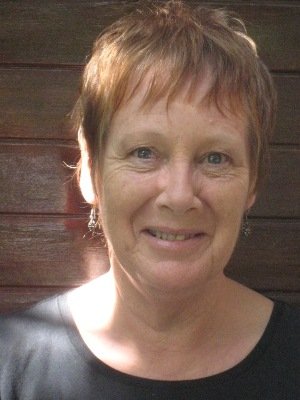 I went to the Greens Institute’s Everything is Connected conference Friday-Saturday in Canberra last week. Canberra is one of my other homes, I lived there for over 20 years and made many strong friendships and had profound life experiences there. The conference was full of Greens, old and young…. I was in a room full of hope, ideas, knowledge – say no more.
I went to the Greens Institute’s Everything is Connected conference Friday-Saturday in Canberra last week. Canberra is one of my other homes, I lived there for over 20 years and made many strong friendships and had profound life experiences there. The conference was full of Greens, old and young…. I was in a room full of hope, ideas, knowledge – say no more.
I prepared a paper based on my concerns about the futures of both rural Australia and progressive politics. Unsurprisingly, they are connected.
I shared my workshop with Lisa Arnaud from Uni of Melbourne who is doing great work in Qld’s rural areas affected by mining and fracking. Check it out.
Here is mine.
Deb Foskey, Network for a sustainable East Gippsland (NetSEG)
A challenge for progressive politics: Bridging the rural-urban divide
‘My constituency is everything this side of the moon’ – a Greens politician who describes themself as a ‘planetarian’
But does it include rural Australia?
The rural-urban divide is a major barrier to extending the power of progressive political movements and parties in Australia.
The discrepancy is acknowledged by most people and its existence is well-documented; however few people are studying it and bringing the data across issues together. Think health services, education, employment, demographic change, population diversity, public transport, political power. The work remains to be done and I hope to do some of it in my private think-tank at Cabanandra.
Tim Colebatch made a start by looking at 3 electorates in Inside Story on July 5 this year.
“The massive increase in Victoria’s population – in a decade, it’s swollen by 1.14 million or 22.3 per cent – has swollen the average enrolment in its electorates by 15.5 per cent since the 2010 redistribution. A third of that has gone into just five electorates, all held by Labor or the Greens: four on the outer suburban fringe, and Melbourne. The census counted 136,018 people living in Aston, 133,772 people in Wannon, and 208,593 in Melbourne, which now has the biggest population of any of the 150 Federal electorates.
Since the 2010 redistribution, Melbourne has added another 52,767 people, whereas Wannon has added just 8415 and Aston 6568. Inner Melbourne can absorb that number because many of them are students, and new jobs are constantly springing up for workers. The inner city is a dynamic region: if you live there, the world around you is changing constantly, and that influences your values. If you live in a settled outer suburb or country town with little population growth, the world around you isn’t changing much, and that too influences your values.
In the three statistical regions covering Wannon, meanwhile, the census found population growth of just 2600 over the past decade. By 2016, in round figures, it had 4500 fewer children and teenagers than a decade earlier, and 3200 fewer people of prime working age – but 10,300 more people at or nearing retirement age. The next census might well record more retirees than workers, because few jobs are being created there and many of the young are migrating. That was why the Andrews government had to swallow its principles and agree to a new subsidy for Alcoa’s Portland smelter, to keep one of the area’s biggest employers.
Victoria is seen as an economic success story, but if you dig into the figures, that success is concentrated in Melbourne, and particularly in inner Melbourne. The ABS estimates that in the past three years, 95.5 per cent of all growth in full-time jobs in the state has been in Melbourne. In net terms, only 4.5 per cent of new full-time jobs are in the regions. In the country, six in every seven new jobs created are part-time. That’s why the kids move out, and head to the city.”
There is a problem here. If not today, in ten years or so as George Megalogenis said on Saturday Extra when discussing the Changing Face of Australia. Migration is changing that face with Sydney influenced by Chinese migration and Melbourne, by Indian. Brisbane is having its face changed by New Zealand and Islander immigrants. Although he didn’t say so, because he doesn’t look there, rural and regional Australia will remain predominantly Anglo-Saxon. He predicted that it will be very difficult to hold together as one Australia those areas not affected by the migration boom with the capital cities absorbing the new skilled arrivals. No doubt Pauline is rubbing her hands with glee.
(Here I did an informal survey of the people at the workshop. About half were from rural areas and half from cities. That was a better result than I’d expected as at previous conferences urban-dwellers haven’t attended workshops about rural issues. There were 3 other workshops on great topics at the same time as ours. As you can imagine, everyone was very concerned about environmental issues that happen in rural areas – deforestation, water conservation, mining etc) – back to the paper
If electoral politics was not viewed as Labor v Liberal-National (plus a few independents and minor parties on the side) but rural-regional v urban, Australia’s demography would ensure that urban Australia will always have the numbers, with 79 seats in our capital cities alone, supplemented by seats in our large regional cities.
Fortunately our divisions are not confined to rural-urban lines, although that division is ever-growing. There are conservatives in the cities as there are progressives in the country.
Nor are the only marginal seats in the inner city as the success of Nick Xenophon’s party and Cathy McGowan in Mayo and Indi respectively shows. Not that they are progressive candidates/members but they are definitely not Liberal-National party candidates, itself a marker of fear for those parties. And the voter can see that their responses to issues are considered and more nuanced than the patter of the ‘major’ parties as they vie for the balance of power and their constituencies’ interests.
In Australia, coverage of rural and regional issues is usually confined to publications expressly geared to those markets – nationally, The Land and, in Victoria, hanging by the skin of its teeth, Weekly Times. Few journalists have crossed that divide. Margo Kingston is the exception. She is the only author who looked at the success of Pauline Hanson in rural and regional Australia in any depth. (https://www.theguardian.com/australia-news/2016/jul/04/pauline-hanson-takes-centre-stage-again-but-this-time-we-should-listen-not-lampoon)
These days she tweets.
Margo Kingston@margokingston1
Elitist snobbery about Hanson & her voters makes me sick. Wrote Off the rails: The PH Trip (1999) to help cross 2 nations divide. Fat chance
1:00 PM – 4 Jul 2016
Margo Kingston
✔ @margokingston1
Instead of Greens leader saying Hanson a racist a bigot his job to expel her, how about “I look forward to discussing her views with her?”
2:51 PM – Jul 4, 2016
The media has adopted Pauline Hanson as code for rural Australia. She is to rural Australia what Edna Everidge is to urban Australia. And about as accurate. Kingston suggests she reflects the views of many rural voters who would normally vote Nationals. She proposes that we learn from her success and steer away from politically correct knee-jerk dismissals to earn favour in inner city marginal electorates where Greens see most chance of winning seats; sadly, from progressive Labor candidate as Adam Bandt’s re-election indicates – often on environmental issues in rural areas. Such contests absorb a significant amount of pre-election spending for both parties. Only it’s a bigger proportion of the Greens budget.
By contrast, I was told that the Greens campaign in one rural Victorian electorate was assisted with a few hundred dollars. Whether Green, left Labor or totally non-aligned, we progressives want more than that. We want city-based Greens and other progressive activists to assist their progressive counterparts in rural Australia and become informed about the issues they are campaigning on. If your passion is forests, wouldn’t you want to connect with environmentalists who live near the forest you care about? City greenies will have more success if they are working with campaigners – or informants – on the ground. The best campaigns have a place for everyone.
In the 1980s, the Errinundra National Park was established as the result of the different parts played by locals in Concerned Residents of East Gippsland and Orbost District Environment Group, the transient Errinundra people aka Nomadic Action Group, a passionate scientist and various ‘professional’ environmentalists from Australian Conservation Foundation, The Victorian Conservation Council and Native Forest Action Council; this was long before the internet so you can’t Google it. It was also before the Greens Party was formed. Relationships weren’t always smooth and the outcome wasn’t what the locals wanted (an end to the woodchipping in East Gippsland forests and the development of an environmentally sustainable industry) but I doubt if there would have been an Errinundra National Park in the early 1980s without their efforts. Of course, it helped that the newly elected ALP state government had an environmentally responsible forest policy and was prepared to honour at least part of it.
If you asked an East Gippsland environmentalist now what worried them most about the future of the forests, you’d still hear about woodchipping although the number of contractors and sawmills has diminished in response to the dwindling resource. But in forests where so much has already been modified by clearfelling and various stages of ‘regrowth’ have replaced mature multi-aged old growth forests there are other equally worrying threats and most of them come from government policy and the attitude of their managers. Apparently random ‘hazardous tree reduction’ has taken our government land management department onto roadside verges, into reserves and national parks where their word defines what is a hazardous tree and where and when a ‘fuel reduction burn’ is needed. (The course to judge an hazardous tree is available on-line for CFA members). East Gippslanders have been dismayed to see inflammatories poured onto swamps and never-burned wet forests to satisfy a burn target discarded by other forest districts.
The hazardous tree and burning programs are a form of structural adjustment for the industry.
But we can get together to prevent the rollover of the Regional Forest Agreements which has made all the above possible.
If you never venture out of the cities, even if you read your Habitat and Wilderness News, you are more likely to believe what the highly paid spin doctors employed by government and industry tell you. The new sand mine planned on the Mitchell River won’t even rate a mention in the state’s daily papers. A small group of local residents is fighting these battles on your behalf. We hope that some of what you do will assist in our efforts to protect our rivers, forests, coastlines and landscapes. But if you never ever go you will never never know.

 I went to the Greens Institute’s Everything is Connected conference Friday-Saturday in Canberra last week. Canberra is one of my other homes, I lived there for over 20 years and made many strong friendships and had profound life experiences there. The conference was full of Greens, old and young…. I was in a room full of hope, ideas, knowledge – say no more.
I went to the Greens Institute’s Everything is Connected conference Friday-Saturday in Canberra last week. Canberra is one of my other homes, I lived there for over 20 years and made many strong friendships and had profound life experiences there. The conference was full of Greens, old and young…. I was in a room full of hope, ideas, knowledge – say no more.